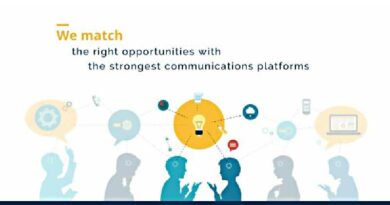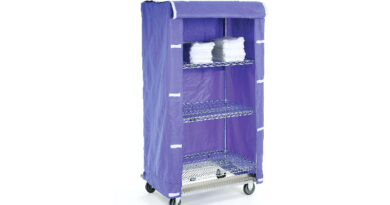Meeting the Covid-19 Challenge
Help is on the way.
Businesses large and small, battered by the effects of the Covid-19 outbreak, are seeking assistance from all quarters to deal with mandated closures and quarantines, growing employee illnesses, and reduced customer counts. Employees are also grasping for lifelines to deal with their own sickness or that of a loved one or child.
Elected officials have rushed to the rescue. Federal, state, and local governments are rolling out grants, offering low-interest loans, funding sick pay, and beefing up unemployment insurance programs.
Family first
Of the many government assistance programs, perhaps the most dramatic is the Families First Coronavirus Response Act (FFCRA), signed into law on March 18, 2020 by President Trump and effective until the end of this year. The FFCRA helps employees weather the Covid-19 storm by mandating-and funding– sick leave over and above normal levels.
Two components of the law help workers affected by the Covid-19 outbreak. The first, The Emergency Paid Sick Leave Act (EPSLA) mandates and funds two weeks of paid sick leave. The second, The Emergency Family and Medical Leave Expansion Act (EFMLEA) expands the provisions of the Family Medical Leave Act (FMLA) to provide additional sick leave funding for employees under certain circumstances.
“The provisions of the FFCRA allow employers to keep their workers on the payroll and ensure that they are not forced to choose between their paychecks and public health measures needed to combat the coronavirus,” says Bill Hagaman, CEO of Withum, an advisory and accounting firm (withum.com). “The law applies to employers with fewer than 500 workers-effectively putting small and medium-size employers on the same footing as large ones who have already been providing similar paid leave to their employees.”
More sick leave
The FFCRA mandates two weeks (up to 80 hours) of paid sick leave for full-time employees. Part-time workers are entitled to paid leave based on the average number of hours they work in a given two-week period.
“The employee needs to meet one of the designated scenarios to qualify for the emergency paid sick leave,” says Christopher H. Jison, an attorney at Wessels Sherman, Minneapolis. These conditions include being quarantined, experiencing Covid-19 symptoms, or caring for a quarantined individual or for a son or daughter whose school or childcare facility is closed due to Covid-19. “There is also a catch-all provision,” says Jison. “If a situation similar to these scenarios comes up, the employee is also entitled to sick leave.”
The sick leave is paid:
- At the regular rate of pay for any employee quarantined or experiencing Covid-19 symptoms and seeking a medical diagnosis.
- At two-thirds of the regular rate of pay for any employee caring for an individual subject to quarantine, or for a child whose school or child-care facility is closed because of Covid-19.
There are limits to the amount of paid sick time. The cap is $511 per day if the employee is quarantined or experiencing symptoms of the virus and limited to $200 per day if the employee is caring for a child whose school or childcare center has been closed due to Covid-19, or caring for a quarantined individual.
One final thing: “Employees who are able to work from home are not entitled to emergency sick leave,” says Jison.
Expanded family leave
The second portion of the FFCRA mandates an additional 10 days of unpaid and 10 weeks of paid family and medical leave (at two-thirds of the regular rate of pay) for workers who must care for a child whose school or childcare center is closed due to Covid-19. Such individuals are only covered if they have worked at their current employer for at least 30 days. The law limits this additional leave to $200 per day and $10,000 total per employee. Again, part-time employees are entitled to paid leave based on the average number of hours they work in a given two-week period.
Here’s where some smaller businesses get a break. The FFCRA exempts employers with fewer than 50 workers from the need to provide extended leave due to school or child-care center closings if doing so would jeopardize the survival of the business.
Who decides whether such leave would in fact threaten the business’s future? The statute had stated that the Department of Labor would have the authority to decide on a case by case basis. “The DOL quickly realized that approving individual exemptions would be an insurmountable task,” says Robin Samuel, partner in the Employment Practice Group of Baker McKenzie’s Los Angeles office (bakermckenzie.com). “So the agency decided to put the burden on each company to certify that it meets the DOL exemption standards.”
Businesses may quality themselves for waivers of the requirement to provide leave due to school closings or child-care unavailability if an authorized officer of the business has determined one of three conditions:
- The requested leave would result in the small business’s “expenses and financial obligations exceeding available business revenues and cause the small business to cease operating at a minimal capacity.”
- The absence of the employees requesting such leave “would entail a substantial risk to the financial health or operational capabilities of the business because of their specialized skills, knowledge of the business, or responsibilities.”
- The business lacks “sufficient workers who are able, willing, and qualified, and who will be available at the time and place needed, to perform the labor or services” currently being provided by the employees requesting such leave, and these services are needed for the small business “to operate at a minimal capacity.”
“The rule notes that employers should document when they make this determination and maintain such information in their files,” says Susan Gross Sholinsky, Vice-Chair of the Employment, Labor & Workforce Management practice of Epstein, Becker Green in New York (ebglaw.com). “But employers are not required to submit such documentation to the Department of Labor.”
Financial reimbursement
Providing sick leave is expensive, and that’s where the same legislation lends employers a helping hand. They qualify for dollar-for-dollar reimbursement for all qualifying wages paid under the FFCRA.
When the statute was first passed many businesses were concerned that the time delay required to receive reimbursements would create cash flow issues. But in early April the federal government took steps to ease the burden.
“Businesses can now use the money they have set aside for payroll taxes to pay for the leave,” says Samuel. “If they do not have enough cash on hand they can apply for an advance refund and receive the money in a couple of weeks.” (To receive this refund business should use “IRS form 7200, Advance Payment of Employer Credits Due to COVID-19.” The form can be filed as often as necessary to maintain sufficient cash flow.)
Many employers face a larger challenge: How can they survive without sufficient hands on deck? “In my experience, employers are less concerned with the costs of providing the paid leave than with the number of employees who will seek to take the leave and therefore be unavailable to work,” says Sholinsky. “This is particularly true for businesses exempted from a shelter in place orders so that some or all of the employees are required to come into the workplace.”
Too, as with any new law, there is the inevitable confusion about details and resulting administrative disruptions. “The DOL and IRS have been issuing new guidance practically daily,” says Samuel. “Much of the language has been inconsistent, at times even contradicting the language of the statute itself. So employers are often confused as to whether they have to comply with the law, and exactly how to comply.”
Two more important points: Employers may not discriminate or retaliate against workers taking leave under the law. And returning employees must be placed in the same or equivalent job positions.
The above description is a capsule summary of the FFCRA, which has many important qualifications. Details are available on the website of the U.S. Department of Labor, at dol.gov. Search for the “Families First Coronavirus Response Act.”
Washington cares
The federal government has introduced another response to the Covid-19 outbreak: The Coronavirus Aid, Relief and Economic Security Act (CARES). Signed into law on March 27, 2020, the legislation has received much press for its tax-free payments of $1,200 for single adults ($2,400 for married couples) and an additional $500 per child. A phase-out of the payments begins at adjusted gross incomes of $75,000 for single taxpayers and $150,000 for married couples.
But CARES also showers small businesses with funds. These include a $10 billion commitment to SBA Economic Injury Disaster Loans (EIDL), including emergency cash grants of up to $10,000 per business. There is also a huge outlay of $349 billion earmarked for forgivable SBA 7(A) Paycheck Protection Loans (PPP).
“The CARES act attempts to ease the burden on businesses as revenues decrease from the pandemic,” says Daniel Mayo, National Lead for Federal Tax Policy at Withum. The funds are intended to provide the liquidity required to allow businesses to survive this economic downturn and helps keep people employed.
Loans and grants
The $10 billion devoted to EIDL loans may be used to pay fixed debts, payroll, accounts payable and other bills that otherwise would go unattended to because of the disaster’s impact. They are available for businesses with under 500 employees. The maximum loan is $2 million, the term is up to 30 years and the interest rate is 3.75%. They can be approved based solely on credit scores and do not require tax returns.
As for those cash grants, businesses can apply online and can roll the funds over into a PPP loan if desired. Businesses wanting to take advantage of the cash grant program can obtain more information from the U.S. Small Business Administration (sba.gov).
Finally, the $349 billion in Paycheck Protection Program (PPP) forgivable loans are also available to businesses with under 500 employees. “The whole purpose of these loans is to bring everybody back to work,” says Frank Boutillette, a Partner in Financial Services at Withum. Loans must be obtained prior to June 30, 2020, unless the program is extended.
The PPP funds may be used for payroll costs of $100,000 in wages per employee per year, as well as for other uses such as mortgage, lease and utility payments, state and local compensation taxes, parental, family, medical or sick leave, group health care, and retirement benefits. (Excluded are payments made to a business’s independent contractors, who can nevertheless apply for their own PPP loans).
Each business can obtain a maximum loan amount of 250% of the average monthly payroll costs incurred during the one-year period prior to the date the loan is made. The terms, identical for all applicants, are two years for repayment at an interest rate of less than one percent.
Businesses can apply for forgiveness of the PPP loans (turning them into direct grants) if funds are spent for permitted purposes during the eight-week period after the loans are made. “Forgiveness is based on the employer maintaining or quickly rehiring employees and maintaining salary levels – and at least 75% of the forgiven amount must be put towards payroll costs,” says Sholinsky. Forgiveness is reduced if employers reduce headcounts or wages by certain amounts.
“The Payroll Protection Program is expected to be oversubscribed so we advise our clients to get their applications in as soon as possible,” says Samuel. “The major banks are struggling to implement the loan process. They say they do not yet have enough guidance from the regulatory agencies.”
Finally, federal legislation has not overlooked larger employers. “The CARES loan program for mid-sized employers (between 500 to 10,000 employees) will be administered by the U.S. Department of the Treasury but is largely undefined and having difficulty getting off the ground,” says Sholinsky.
Tax credits
The CARES Act offers additional benefits to employers:
- Businesses of all sizes can take employee retention tax credits equal to 50% of the qualified wages paid from 3/13/2020 through 12/31/2020 for organizations either fully or partially suspended due to a Covid-19 related shutdown order; or which experienced a decline in gross receipts of more than 50% compared to the same period the previous year. The credit is capped at the first $10,000 of wages per employee (including health benefits), so the maximum credit is $5,000 per employee.
- Employers may defer payment of their share (6.2%) of the Social Security payroll tax, and 50% of self-employment taxes, for taxes due from 3/27/2020 through 12/31/2020. The deferred amounts must be repaid the following year.
- Net operating losses in tax years 2018, 2019, and 2020 can be carried back five years. Amended returns need to be filed.
Many of the above provisions have important qualifications so businesses should consult their tax advisors for details. Employers may also benefit from additional CARES provisions that modify various accounting rules. It’s important to take note of these tax credits as they could change the payment that business owners need to make. Be sure to work with tax professionals, such as those at federal-tax-resolution, to make sure you are paying the correct tax amount. This will resolve any issues and ensure that no further action needs to be taken by the IRS.
Workshare programs
State and local governments are introducing more comprehensive “workshare” or “employee retention” programs designed to help employers avoid layoffs by bolstering the amount of unemployment insurance available for workers whose hours have been reduced. The programs allow employees to collect such insurance even when their hours have not been reduced enough to take them below the statutory maximum to collect traditional unemployment.
“Workshare programs are intended to let businesses cut their labor costs without incurring the stigma and disruption of layoffs,” says Samuel. “The CARES Act incentivizes states that don’t have workshare programs to put them in place, as well as making the terms of existing programs more attractive to employers.”
Workshare programs have pitfalls of their own. “States often have restrictions on their use,” says Samuel. “For example, many states disallow the use of the programs as transitions to layoffs. That presents potential problems, because many employers are trying to figure out what they are doing as they go along, and they know they might have to go to layoffs at some point down the road. So they fear being penalized if they utilize the workshare program.”
States and municipalities are also providing employers with low-interest loans and outright grants to keep workers on the payrolls. “Many cities are enacting emergency sick leave or granting stipends to employees who have been laid off, says Samuel.” To qualify, businesses must usually show that the pandemic is causing a demonstrable reduction in revenue or serious business harm.
Things can get a little chaotic because all levels of government are trying to put their fingers in the dike and their efforts often do not match up very well, says Samuel. “It can be difficult for businesses to understand their obligations. It shows that sometimes rushed legislation can create bigger problems. But you can’t fault governments for trying.”
Lessons learned
The federal government continues to introduce innovative programs to mitigate the effects of the Covid-19 outbreak. In early April the Federal Reserve set up a “Main Street Lending Fund” to offer $600 billion of four-year loans through commercial banks to small and mid-sized businesses. Terms will be 2.5% to 4% above the current secured overnight funding rate, which is close to zero. Principal and interest payments will be deferred for one year.
While all of these efforts continue, employers are learning important lessons that may help transform the future workplace. “The silver lining to the outbreak is that we have learned to use technology a lot quicker than we thought we would,” says Hagaman. “We have figured out how to be very productive at working remotely.”
The outbreak has also highlighted the importance of caring for one’s fellow human beings. “On the whole, I have been impressed by how far companies are going to protect their workforces,” says Samuel. “It was a far different case in the great recession of 2008-2009 when everyone seemed to be calculating only how to reduce business expenses. Now the human angle is much more prominent. There is a feeling that we are all in this together.”
Phillip M. Perry is an award-winning business journalist based in New York City. He covers management, employment law, finance, and marketing for scores of business magazines.



